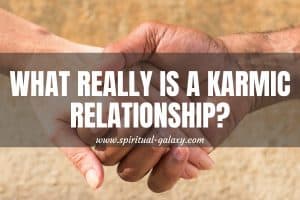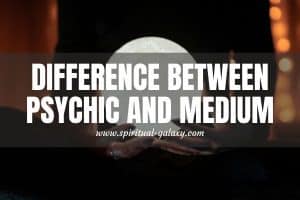Disclosure: This post may include useful product links. Buying through these links may earn me a commission at no additional cost to you. Read my affiliate disclosure.
Fairies were also known as fay, Fae, fey, fair folk, or faerie. A fairy is a mythological being or legendary creature found in European folklore. It's a sort of spirit that is typically characterized as metaphysical, supernatural, or preternatural.
Fairy myths and legends are a collection of folk beliefs from several sources. According to various folk ideas, fairies have been portrayed as:
- Demonized angels or devils in the Christian tradition
- Spirits of the dead, as deities in Pagan belief systems
- Prehistoric forerunners to humans
Spirits of nature, according to various folk ideas. The term “fairy” has been given to supernatural beings with human-like appearances and magical abilities.
It has also been used to describe any magical creature, such as goblins and gnomes. Fairy has been used as an adjective, with a connotation similar to “enchanted” or “magical.” It's also the name of the land from where these beings belong, the Fairy Land.
Fairies are depicted as having human-like appearances and possessing magical abilities. Throughout history, some sprites range in size from very small to the size of a human. Instead of being constant, these tiny sizes may be magically assumed. Some little fairies might be able to enlarge their forms to resemble humans.
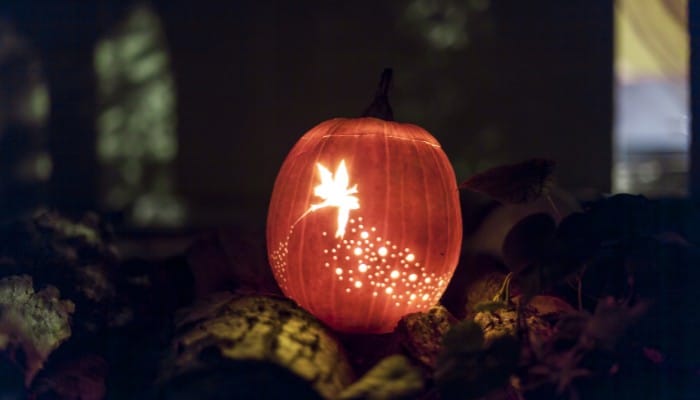
Fairies were reported as being small in stature, clothed in grey, and occasionally seen in armor. Fairies are said to have green eyes, in particular mythology. Fairies are depicted wearing footwear in some representations and barefoot in others.
While frequent in Victorian and subsequent artworks are unusual in legend. Fairies flew by magic, sometimes perched on ragwort stems or the backs of birds. Dragonfly or butterfly wings are frequently shown in modern artwork.
Folklorists believe that ‘fairies' evolved from previous beliefs that fell out of favor because of Christianity. Because ‘fairies' may be linked to numerous sources, these contradictory interpretations aren't necessarily incompatible.
Fairies were thought to be a type of “demoted” angels, according to Christian belief. According to one myth, several angels revolted, prompting God to close heaven's gates.
Those who remained in heaven remained angels, to hell became demons, and in the middle became fairies. Others claimed that they were cast out because they were neither holy nor wicked.
Who are the fae folk?
The Fae Folk, often known as the Good Folk or fairies/faeries, are supernatural beings who inhabit the Otherworld. There are numerous factions, political “groups,” and varieties of fairies and creatures in the Otherworld.
Even though you may imagine a fairy as a tiny, angelic figure with wings, the Fae Folk are made up of various animals. There isn't one type of fairy. Pixies, elves, kelpies, fairy horses, fairy dogs, and much more are mentioned in accounts from well-known witches. Some beings in the Otherworld are so unique that we don't even know what to call them.
We don't have a complete list of every entity in the Otherworld. Pixies, elves, and house fairies, commonly known as Brownies, are the most common fairies mentioned in witchcraft and spiritual organizations.
There are many different kinds of fairies, but these are the ones who interact with humans the most. These Fae Folk appear to move in lockstep with the human community to which they are linked.
There are indigenous Fae Folk in North America (such as those affiliated with the Cherokee Nation). But there are also Scottish Fae Folk, Irish Fae Folk, Germanic Fae Folk, and others who moved to America with their ancestors.
Before we proceed, I want to share a free PDF with my readers created by my friend Alex which explains the simple yet scientifically proven Wealth DNA method that allows you to effortlessly start attracting the wealth and abundance you deserve....So you can easily quit your soul sucking dead-end job and live the life you’ve always dreamed of.
Whether it’s traveling to exotic locations around the world…Buy anything you want without having to check out the price tags…And never having to worry about bills. Click here to access this “Wealth DNA” report to awaken your dormant ability to attract wealth and abundance >>>
Fae Folk are endemic to almost every part of the planet. The Fae Folk come in various sizes, shapes, and forms, and they can appear to be entirely dissimilar. A fairy's appearance is not predetermined.
The term “fairy” refers to a wide range of creatures. The word fairy was initially used in the English language about 700 years ago, but the synonyms elf, goblin, and imp were frequently substituted.
Aside from someone from the Otherworld, there was no clear definition of what constituted a fairy. House and garden Fae Folk are the most prevalent Fae Folk to contact with humans in our world.
Brownies are the name given to house fairies in most cases, but not always. Garden fairies are the most prevalent variety of Fae Folk, while elves are famous in Iceland and other colder areas.
Of course, this is only a guideline. You may encounter various Fae Folk in your neighborhood; the type of Fae you engage with is entirely dependent on where you reside. Keep in mind that even if you deal with a specific set of fairies who follow certain cultural conventions, there are plenty of other types out there who act quite differently.
Since that would be highly impossible, you do not have personal experience with all varieties of fairies. Fae Folk is a large subsection of the Fae.
The Fae Folk or Fair Folk and the Fae or the Good People/Good Neighbors appear to represent all beings of the Otherworld in terms of terminology. In popular culture, the term “fairy” appears to refer to our romantic notion of a Tinkerbell pixie.
We often conjure up images of pixies when we hear the word fairy. The phrase fairy or faery (both spellings are now interchangeable) refers to a single individual creature for the sake of learning. However, I don't recommend addressing these beings by the word fairy to their faces.
Do humans worship fairies?
Witches do not worship fairies in the same way that we do gods or goddesses. The Fae Folk are beings from the Otherworld with whom you can have a relationship. But it should be more of a give-and-take than the kind of link we form with deities.
Humans do not rule the Fair Folk. Hundreds of years ago, peasants felt humans were superior to the Fae, but they were also terrified of them. I (and other witches) believe it is preferable to regard faeries as equals who are different from us.
Since the Fae Folk can exist without us, the human kingdom has no authority over them. Although some faeries like building relationships with humans, they don't require us for many things. For this equal relationship, respect is highly vital while interacting with faeries.
Fairies sometimes assist in releasing trauma or asking for favors or advice, are not there to support us or seek our assistance. They're just a part of their universe.
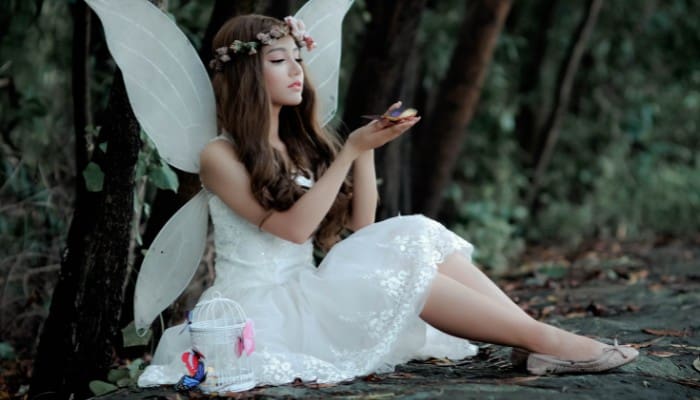
What is the habitat of fairies?
The Otherworld is home to the majority of Fae Folk and Faeries. Apart from the fact that it exists independently of our dimension or plane, little is known about the Otherworld.
According to legend, the Otherworld is relatively close to our own. It's almost as if we exist in the same universe as fairies, just in a slightly different dimension.
We're still close enough to talk about it. Fairies were thought to live on the plane just above us in old Ireland, according to tradition.
Fairies use glamours to alter what we perceive. Since our worlds are so close together, they usually have to hide from us.
Some Fae Folk live in the woods (as we would expect), while others live in mines, the sea, or even cities. Fae comes in various shapes and sizes, and their dwelling arrangements are just as diverse.
Fae might be seasonal creatures as well. Some Fae is active all year, while others are only active during certain seasons and rest in between. The Seelie Court, for example, is most active in the spring and summer, whereas the Unseelie Court is most active in the fall and winter.
It is discovered that the Otherworld has a wild aspect that we don't have as humans. We are more wary and fearful. We have distinct human emotions, yet the Otherworld does not always share these sensations.
The Fae Folk does not always understand empathy, sadness, and love in the same way. This, however, is dependent on the fairy in question.
The Fae Folk are notoriously hedonistic. The Otherworld is supposed to be more accessible to humans on Earth than realms like the Underworld.
All around the world, there are claimed to be portals to the Otherworld. A mushroom ring is one form of portal, but there are many others.
The film Alice In Wonderland is often regarded as a fantastic depiction of the Otherworld. The colors are brighter, the personalities are stranger, and time isn't consistent in the Otherworld.
Do fairies pose a threat to humans?
Fairies are frequently misunderstood as being downright evil. However, the Fae Folk, in my experience, is neither good nor evil.
They're just ordinary people. Every fairy you meet, just like humans, will act uniquely.
Fairies, for example, have their own set of rules, ethics, morals, and etiquette. Since they live in a culture that we aren't familiar with, it can be challenging to understand them.
It is natural for us to be terrified of anything or anyone with equal power to us. Understandably, we're frightened of power and the unknown because, in the past, these things meant being overpowered or even killed.
Even while fear is biologically normal, a little research typically helps to alleviate it. The unknown factors, rather than the fairies themselves, seem to produce most of the fear around the Fae Folk.
So, are fairies capable of causing harm?
Yes, to put it. Fairies are a fickle bunch. In many aspects, they don't act like people.
They are more than capable of injuring you if you do something that disturbs them. You can't merely lock your doors against fairies once you've invited them in. They aren't limited by physical laws like we are, making it a little more challenging to defend yourself.
Unlike ghosts or spirits, the Fae Folk live in a realm of reality that is quite close to ours. They have more physical power than spirits here, and they can readily move objects. They can touch humans, which would be extremely difficult for a ghost to do.
Negative interactions have been reported by many powerful witches and spiritual instructors who work with the Fae Folk. Faeries have been accused of stealing objects, inflicting long-term bad luck, damaging crops, injuring animals, making people sick, temporarily blinding humans, and inducing madness or loss of speech.
Faeries have been known to inflict strokes, bruises, and muscle cramps (when they pinch or hit you), take infants, and even try to kill humans in the worst-case scenario. Please keep in mind that these are worst-case scenarios. In each of these cases, faeries exacted vengeance they believed was justifiable based on something the human had done, whether or not the subject was aware of the transgression.
Fairies are usually only interested in harming humans if they have damaged or ruined a fairy realm, though this varies depending on the sprite in question. There are forgiving fairies, such as home fairies, and elements of the Fae Folk, such as the Unseelie Court, who will harm humans for no cause at all.
Fairies, on the other hand, can help you heal. They can make you friends, nurture your gardens, play with your pets, and introduce you to a truly magical world. There are some friendly fairies out there who enjoy playing with children, working with nature, and interacting with the world's natural wonders.
Fairies have been known to issue warnings to humans when they are in danger. When a witch's house caught fire in the middle of the night, she was awoken by a fairy. When an evil spirit began lying to my sister, a fairy woman warned her, and she was able to protect herself.
Some fairies aid witches in their work, teaching their favorite humans new recipes or charms, or even healing chronic illnesses. Fairies, like humans, come in a variety of personalities. There is no need to be more afraid of fairies than you are of humans going down the street, in my opinion, but there is reason to be courteous and cautious.
Some of the terrifying legends about the Fae Folk are accurate. Others developed to explain horrific events such as child death or kidnappings. Death was considerably more prevalent and often more terrible before DNA tests, organized police, or treatment like antibiotics, so many blamed it on fairies as a survival strategy.
The way you treat fairies, as well as the personality and temperament of each fairy, will determine how you interact with them. Dark, light, and a rainbow of hues can be found in any civilization.
Fairies are notorious for their mischief. This isn't to say they're awful people; they just like playing games and making puns.
They may take items from your house or deceive you into handing over money. Faeries, on the whole, are incapable of lying.
While they will officially tell you the truth, they are skilled at deceiving you or avoiding answering your question by utilizing word games. It's important to remember that once you've made a bargain with a fairy, you can't back out. Fairies are known to use any means at their disposal to force you to consent verbally (the verbal contract is vitally essential to them), so bargain wisely.
Even agreeing to more negotiation is a bargain because you can't back out of a conversation once you've accepted!
Before contacting the Fair Folk or attempting anything with them, you should be aware of the following:
- Basic Fae Folk terminology
- Fairy etiquette
- How to set upwards and borders without offending others
- How to protect yourself if needed
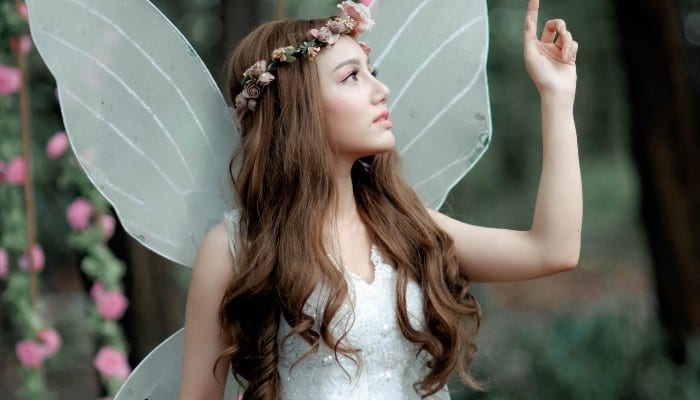
How To Contact The Fae Folk?
Set some limits and wards before you even consider approaching the Fae Folk. In the next section, I'll go over how to achieve this in further detail.
Before you come, fairies, you should also be willing to put in some effort. If you begin providing gifts regularly and create a relationship with them, they may become angered or hurt if you abruptly stop, and they may retaliate.
You might also find this article interesting: The Secret to Attracting Wealth: Traits the rare billionaires share!
Of course, not all fairies are like this, but a few unspoken Fae Folk norms should be followed. Respect the Fair Folk and their property.
Do not enter regions that are marked for fairies with bravado. Contact them instead and allow them to come to you at their speed. If you get the impression you have intruded, do not return to the area until you have been invited.
Before you start:
- Learn more about your local folklore and regional legends.
- Figure out what kinds of Fae Folk dwell in your area and who you should contact.
- Keep in mind that cultivating a friendship with any of the Fair Folk can take time.
The Fae have a hard time trusting anyone right away, especially humans. These connections should resemble any other human interaction.
You can't summon the Fae whenever you want like you can your guides. They don't appreciate being used. Therefore this has to be an equal partnership.
Begin by leaving them offerings to begin working with the Fae Folk. Crystals, silver bobbles, mirrored bits, and other tiny sparkling objects appeal to them.
Sweet foods, milk, honey, and wine are other favorites. Instead of the worst, please give them the most significant part of your meal or gifts.
They want to be recognized, and they appreciate it when you make an effort to create a relationship with them. Leave the offerings outside if you don't wish the Fae to come into your home right away.
Make an effort to choose a specific location and leave offerings there regularly. If you live in an apartment, a window box or a park bench will suffice if you don't want to invite the Fae Folk inside your home (which I wouldn't recommend unless you're an expert). Working outside is more straightforward and safer.
If you have a yard, make sure to plant a lot of flowers in it! Gardening. Nature is two things that the Fair Folk adore. When you see butterflies or birds in your yard, it's usually a sign that it's a place where faeries would love as well.
Avoid using iron when working with the Fae. It is believed that it is hazardous to them.
Try to keep it out of my yard just in case. Fairies enjoy playing wind chimes and other musical instruments.
They also have a thing for miniature fairy houses and are drawn to kids who create them. Place some wooden fairy houses in your yard if you want to be extremely clear about your intentions.
Before you even begin contacting the fairies, they will assess your personality. You can also simply speak out loud or write a note to the fairies to let them know they are welcome.
You can't take back what you've said after you've said it, so be very explicit in your words. If a Fair Folk member is interested in conversing with you, they may leave you gifts.
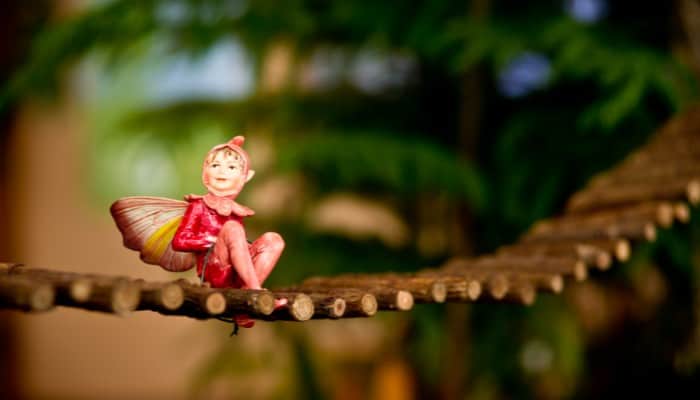
Types of fairies
The majority will fall into one of three categories: neutral, Seelie, or Unseelie. Fairies who are neither bright nor dark are known as neutral fairies. The Seelie are typically thought to be colorful fairies, while the Unseelie are the polar opposite.
Fairy kinds that humans are most likely to encounter:
The well-known pixies
These are winged pixies who stand little more than 6 inches tall. They may change the size of their humanoid form as needed.
They have a strong sense of duty toward other fairies of comparable size. They also frequently serve as peacekeepers.
Pixies adore flowers and gardens, and they enjoy sipping nectar from blooms such as honeysuckle. Because they have such a fast metabolism, they regularly consume high-energy meals such as sweets.
They may be curious, fun-loving creatures, but they also have a darker side. These hardworking, resourceful people live in huge colonies that are meant to keep them secure.
They build their cities in the woods and shroud them, making them difficult to find. When confronted with danger, they prefer to attack like a swarm of angry pixies.
They are incredibly friendly, compassionate, and helpful to many other sorts of creatures, including humans. Pixies are controlled by a king or queen who can live to reach 100 years old.
Pixies are one of the most frequent sorts of fairies. They are also the type of Fae that humans are most likely to encounter.
Brownies
This courageous and daring species of fairy may grow up to 6 inches tall. They are also called “nims” on their planet.
They are popularly recognized as brownies due to their attire and proximity to the ground. They don't have wings, but they can get to high heights when necessary.
Brownies are incredibly sociable and prefer to dwell in large family groupings or communities. They scavenge to live, spending their days looking for food, home supplies, and tradable commodities. When it comes to people, they tend to be friendly to those that share their beliefs.
Trooping fairies
Trooping fairies have no wings and have a similar look to brownies. Trooping fairies, according to a brownie we encountered, are brownies who form lengthy lines. This configuration is expected when they are about to go to battle.
Trooping fairies are a little different from your typical brownie. In comparison to the welcoming brownie, they have a more severe and refined existence.
Troops of fairies like to go through the woods. They prefer where there is a lot of underbrush to avoid being seen. Some individuals believe they live in “fairy trees,” which are commonly referred to as such.
Fauns
The faun is a strange creature. It has horns, a human torso, and a goat's body below the waist. Fauns are attractive, charming, and highly appealing creatures that live in wooded woods.
To accomplish what they want, they frequently use mind control and magic. These are conjured up through their pipes or flute to prey on their unwary victims.
If you encounter a faun, the elves advise you to divert your gaze. Once they have your attention, you are under their influence. They appear to be neutral, but they are hazardous.
Merfolk
Mermaids and mermen are commonly referred to as mermaids and mermen. However, many prefer the term mer or merfolk.
This species of fairy, unlike humans, does not reside in buildings or houses. They swim as a family unit, but they are also part of a broader society.
Merfolk spends most of their days looking for fish and other marine animals to consume. They create prominent families on purpose. Living by the sea is highly hazardous, and most children do not survive to adulthood.
The mer have recently become increasingly apparent in our world. The massive amount of oil spills and pollution has seeped into their world from ours. They are typically dissatisfied with the pollution and devastation of their waterways, and they blame people.
Leprechauns
Leprechauns are expert craftspeople who often specialize in shoemaking and stand between 2-3 feet tall. Legends portray them as loners, yet this is not the case. They dwell in communities that are well-protected by magic and are primarily found in Ireland.
They are huge fans of gold and ale. They also spend a lot of time thinking about how to gather and enjoy both. Leprechauns are notorious for being information brokers, selling the data they've collected for a cost.
They have a reputation for being deceitful. However, in general, they are honest, good-hearted individuals who value honesty.
Gnomes
Gnomes are shy and cautious creatures who like to be around other gnomes. Their diminutive stature leaves them susceptible to bullies.
Therefore they strive to blend in. They are most known for their famous red, pointed hats. However, they also wear a range of other colors and styles.
Gnomes may be found in small isolated populations in most natural regions across the world. Fruit, mushrooms, nuts, root vegetables, eggs, and meat are only eaten on rare occasions. They are expert healers who are recognized for treating sick and damaged animals.
Grundels
Grundels and elves have a symbiotic connection and are seen in the houses of elves. In exchange for a secure and pleasant home, Grundels willingly work for the elves. They are devoted to their host elf family. In most cases, they stay with the same family for generations, migrating only when necessary.
Elves, on the other hand, hold grundels in high regard and see them as kin. Grundels are around 3 feet tall and frequently dress in striped clothes.
Hobgoblins
The hobgoblin is a lonely, brown monster that lives in trees and haunts the forest. In general, this neutral fairy is a calm individual who prefers to stay to himself.
He is typically not violent unless provoked. However, when his tree is threatened, he may be pretty vicious. Because his anger may rapidly flare, it's best to be on his good side.
Elves
Elves are a long-lived race that may be found in various parts of the Earth. They thrive in arts and crafts because they have sharper senses and perceptions than humans. The art of magic, which they define as the gathering and directing of natural energy.
Elves, on the whole, resist technology and prefer to dwell close to nature in a peaceful environment. They respect and cooperate with all parts of nature.
Elves are around the same height as humans, although they have a slimmer physique. Their features resemble those of humans, yet they are different. They have prominent cheekbones, angular features, captivating eyes, and pointy ears.
The Seelie (light elves) and the Unseelie (dark elves) are the primary kinds of elves. In general, the Seelie elves desire to collaborate with humans to restore the Earth. The Unseelie would instead solve their issues by eradicating humanity.
The Elves of Fyn, who provide most of the material on this site, are Seelies. Humans should attempt to avoid coming into contact with the Unseelie at all costs.

Common fairy traits
Fairies, like any fanciful creature, formed in men's and women's imaginations. They can be anything we want them to be, take on any shape we want, and talk. It's difficult to pin down features of species that have been spotted in different settings.
Mutable, Anamorphose, Astral, Creators of Illusions
In the realm of fairies, nothing is as it appears. Castles reveal themselves to be dark caves, while caverns reveal themselves to be bright palaces.
Fairies are changeable entities in and of themselves, constantly shifting shape and kind. When a fairy compensates a human for services performed, they're seldom happy with only cash.
Instead, fairies reward people with dead horses, dry leaves, twigs, and other seemingly insignificant objects. Items that convert to gold if they're wise enough to carry it home with them.
Extreme Emotions
Fairies are far more sensitive to emotions than humans are. When a human provides even the slightest amount of assistance, they are rewarded with lifelong pleasure. If a human causes even the tiniest amount of harm, death is typically the result.
Fairies are the severe enforcers of morals. They will ask people to share crusts of food, the warmth of a fire, and others.
On the other hand, these same fairies may produce riches, limitless food, and grant desires. The explanation is that fairies are putting humans to the test in terms of morality. Fairies have a wide range of emotions, including joy, sadness, love, and anger.
Lovers of the Arts and Beauty
Flowers bloom, the sun shines, and the mountains rise and fall because of the fairies. Fairies are responsible for making the world attractive, but only in the way that they want.
People thought that fairies were responsible for allowing life to exist. However, they did not believe that fairies were creators for creation.
Fairies are artists who are passionate about what they find lovely. This can be seen by their preoccupation with music, poetry, and dance.
This isn't to suggest they're whimsy-loving artists. Indeed, when we consider the character of artists throughout history, they are rarely quirky. Fairies are meticulous in their work, as the fossegrim demonstrates (a male waterfall fairy).
Fairies are demanding artists who do not accept weakness or pain when it comes to their craft. The degree of severity with which the fossegrim teaches music. They are ardent admirers of beauty and the arts.
However, beauty is a complicated topic in and of itself. It's more than just in the mind of the observer.
Fairies, like human artists, are unique and weird. Artists are prone to outbursts of fury that may be rather violent.
Many fairies dislike such places, and being eternal beings; they never look for a conclusion. Their art may be a never-ending journey that goes on forever.
Immortality and Immunity
Diplomatic immunity is no natural immunity. A diplomat's duty is to persuade the nation they are visiting to like them. Fairies, on the other hand, have no such requirements.
Furthermore, they are frequently immune to the penalties that plague the human world, even death. Their perspective of things changes as a result of their immunity.
Any kingdom may be just another kingdom. Any mortal could be just another existence in a never-ending series of worthless lives. Immortality makes fairies dislike new things in the same way that elderly humans are stereotyped.
Fairies Never Mature but are Always Ancient
Many fairies never mature. However, they grow up in a matter of years or are born old.
Furthermore, due to their eternal nature, they only have the faintest recollection of being young. This scenario may cause individuals to want something they can't have: a childhood.
We witness child actors who grew up to search after their youth later in history. They wanted to construct their own “Neverland.” Even beyond this, many people yearn to return to or reclaim their childhood.
Fairies, on the other hand, may alter their appearance at will. The same social standards do not bind fairies as humans.
Human children are required to observe some laws. Fairies, however, due to their magical abilities, do not have nearly as many.
Due to their eternal nature, they will always have a stronger desire for childhood. There is never a time when they start to falter and become more easily hurt. So they may, and do, dance on the hillsides every night for forever.
Dangerous, Quirky, Playful, and Unpredictable
Fairies always seem to have a sense of humor, even if their games become deadly. Fairies are inherently contradictory. Fairies represent the moment when the coin is in the air, trapped between two extremes.
The rusalka is a young girl who never grows up, develops, or discovers true love. She is torn between passion and childishness, between young play and death, throughout her life.
She is old, but she has never matured. Fairies exist in a perplexing period, caught between darkness and light.
Shy
Fairies dislike being seen by people; they rarely appear to humans. Instead, it is in their nature for them to conceal from humanity.
Of course, it's plausible that the explanation is the threat that humans provide to fairies. After all, there are numerous tales of people kidnapping fairies. Some humans force fairies to marry them, provide riches, or grant other wishes.
The dread of humans among fairies derives from more than our capacity to hurt them. Fairies that fly far away from people are safe, but they are also rarely seen.
Fairies never grew up and are like shy children or spirits who will never die. Fairies are eternally torn between being people and gods. They are also torn between eternal happiness and fleeting pleasure and between life and death.
Perhaps fairies, like children, are bothered by our unwavering attention. When humans join them in the world of in-between, fairies seek for humans.
Multiple Souls
Many fairies possessed many souls, which meant they were mirror images of one another. Many people believed that humans had several spirits or souls.
Each soul traveled to a separate realm after death. Numerous souls often appear as multiple personalities or characteristics in spiritual beings.
Kind and Caring
Fairies are frequently kind and caring. Fairies, for example, are Santa Claus and the various fairy-like entities from whence he comes.
In the Kalasha regions, these would bless communities, same in Japan. Fairies of France would assist the poor become wealthy. The Tylwyth Teg of Wales would place money in the shoes of impoverished servants.
When one meets them, one should approach them, ensuring that one gets on their good side. Because many fairies are thousands of years old, they consider any human to be youthful. Fairies may regard a human in the same manner that we might view a stray animal. Some fairies are the spirits of people who have died; they can be nurturing ancestral spirits.
Enforcers of Morality
Fairies, like a grumpy older man who screams at misbehaving children or a nice person. Especially those who attempt to guide people down a better road.
In fairy tales, fairies are the enforcers of morality. Fairies reward good children with presents, but they also punish those who violate society's standards.
Vindictive
Fairies may be ruthless, murdering anyone who upset them—those who work on Rusulka's day and don't keep sacred risk being killed in Russia. Whistling in the forest puts you in danger of being tortured to death. When a family constructs a home on the realm, the fairies murder them one by one.
Murderous
For a variety of causes, some fairies are nasty and deadly. Some would drown individuals to make up for the human sacrifices she no longer received. Because humanity had turned their backs, Black Annis would eat children as a form of vengeance.
Some elves were essentially serial killers, murdering for the sheer joy of it. Others murdered for sustenance and to acquire power in the same manner as vampires did. The smell of blood may pique the interest of certain vampires.
But then again, all of these are part of their enchantment.
Here are a few more fascinating details about fairies:
- Freckles are nothing more than fairies' kisses.
- Fairies reside in areas where they have the slightest possibility of coming into touch with humans. They reside in woods, up trees, hollow spaces, mountaintops, and invisible worlds right among us.
- Honey cake, milk, nectar, and sweet butter are all favorites among fairies.
- The natural world — all living things – is watched over and protected by fairies.
- Many fairies like making practical (and occasionally not-so-practical) jokes on humans and even one another.
- Fairies' magical abilities are negated by iron, which gives them agony.
- A sudden shivering wind or ripples on the water's surface are typically signs that a fairy is close.
- Fairies can live for hundreds of years.
- Human rheumatism is sometimes thought to be caused by furious fairies' pinches.
- By their very nature, fairies are enchanting.
- Fairies enjoy dancing.
- According to mythology, fairies are prone to snatching human newborns and replacing them with changelings.
- Fallen angels are the oldest and most potent fairies.
- Some fairies were once humans who got lost in the world of fairies.
- Fairies are eager to help you out and quicker to demand money.


